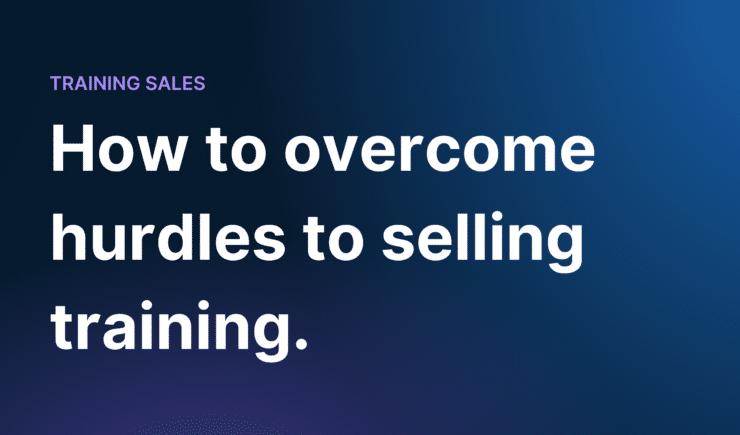A headless LMS separates the learner experience from backend training operations using APIs. For enterprise training teams, this modular approach enables custom learner interfaces while automating back-end functions like scheduling, reporting, and resource coordination across systems.
What Is a Headless LMS?
A headless LMS is a learning system where the frontend (learner-facing content) is decoupled from backend logic (scheduling, reporting, data handling) and connected through APIs.
This structure is common in modern software, but only recently adopted in L&D. For enterprise teams juggling multiple systems — LMS, HRIS, CRM, CMS — headless architecture provides the flexibility to design ideal learner experiences while managing operations through specialized tools.
The Shortcomings of a Non-Headless LMS
Most LMS platforms are monolithic: the same software delivers content, tracks learners, and attempts to manage operations. But for enterprise organizations, this creates friction:
- Systems aren’t built for scalability or integrations
- Manual data transfers slow teams down
- Training operations become spreadsheet-driven
Instead of asking your LMS to do everything, a headless LMS lets it do what it does best — deliver content — while specialized tools handle operations.
Headless Technology and APIs
In a headless setup, your LMS becomes just one part of a larger, integrated training stack. APIs allow:
- Data to move freely between platforms
- Content to be updated dynamically
- Personalized learner experiences based on backend insights
Administrate’s customers typically use 9–12 systems to manage training — headless architecture brings these systems together. Instead of manually exporting and importing spreadsheets, APIs automate communication across your stack.
What’s Possible With A Headless LMS?
The real power of headless lies in what it unlocks:
- Automated, dynamic content curation
- Real-time learner recommendations based on job title, certification status, or manager input
- Cross-platform reporting and analytics
- Integration of generative AI tools into training workflows
These projects aren’t pipe dreams — they’re made possible by well-integrated data and flexible architecture.
Takeaways for Supporting a Headless LMS
To support a headless LMS, you’ll need:
- A flexible frontend (LMS, CMS, or both)
- Reliable backend management software (like a TMS)
- A strong API layer and integration strategy
- Organizational alignment on data goals
Administrate helps enterprise teams support headless LMS architectures by integrating systems, streamlining training operations, and providing backend tools for scheduling, communication, and reporting.
TL;DR Summary
What is a headless LMS?
A headless LMS separates the learner interface from backend operations. It uses APIs to connect frontend learning with backend tools like TMS, HRIS, or CRM systems.
Why would an enterprise use a headless LMS?
Because it allows greater flexibility, personalization, and integration — essential for large training teams using multiple platforms to manage content, learners, and operations.
What do you need to support a headless LMS?
You need a modular system: a frontend LMS or CMS, a robust backend (like a TMS), and a layer of integrations via APIs.
Can a TMS power a headless LMS setup?
Yes — a TMS like Administrate can handle scheduling, resource management, reporting, and communication while feeding data to your LMS frontend.





